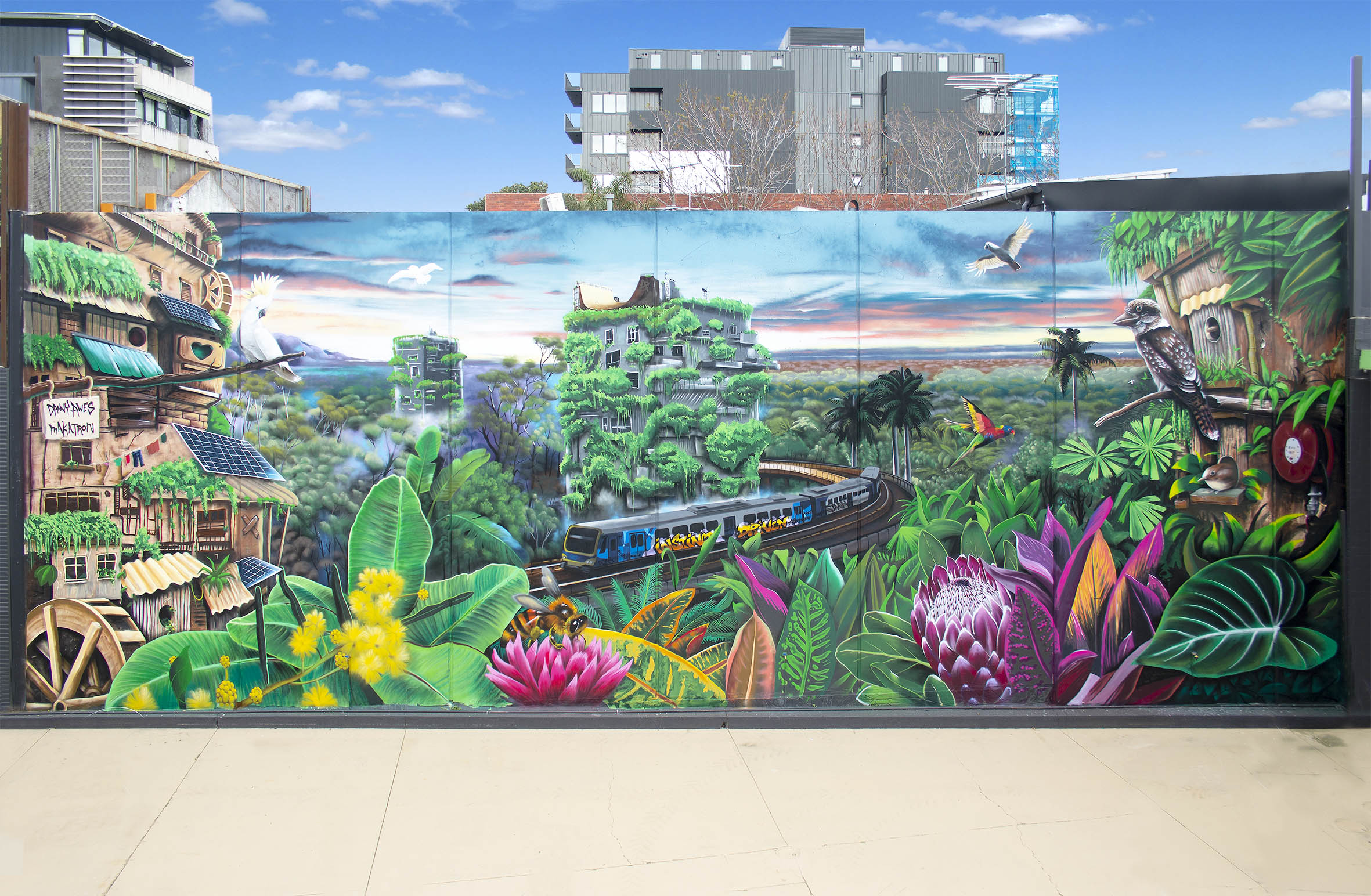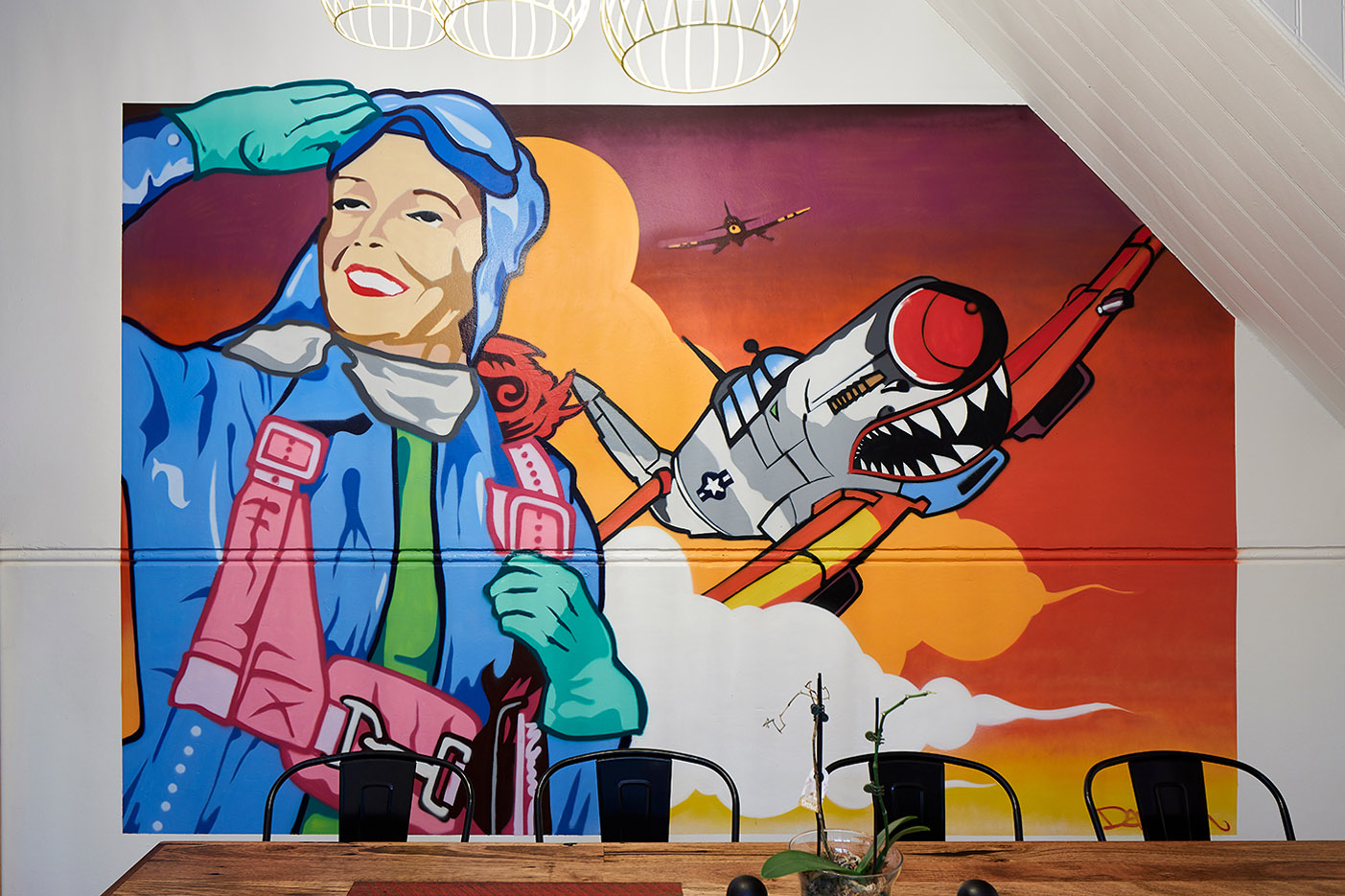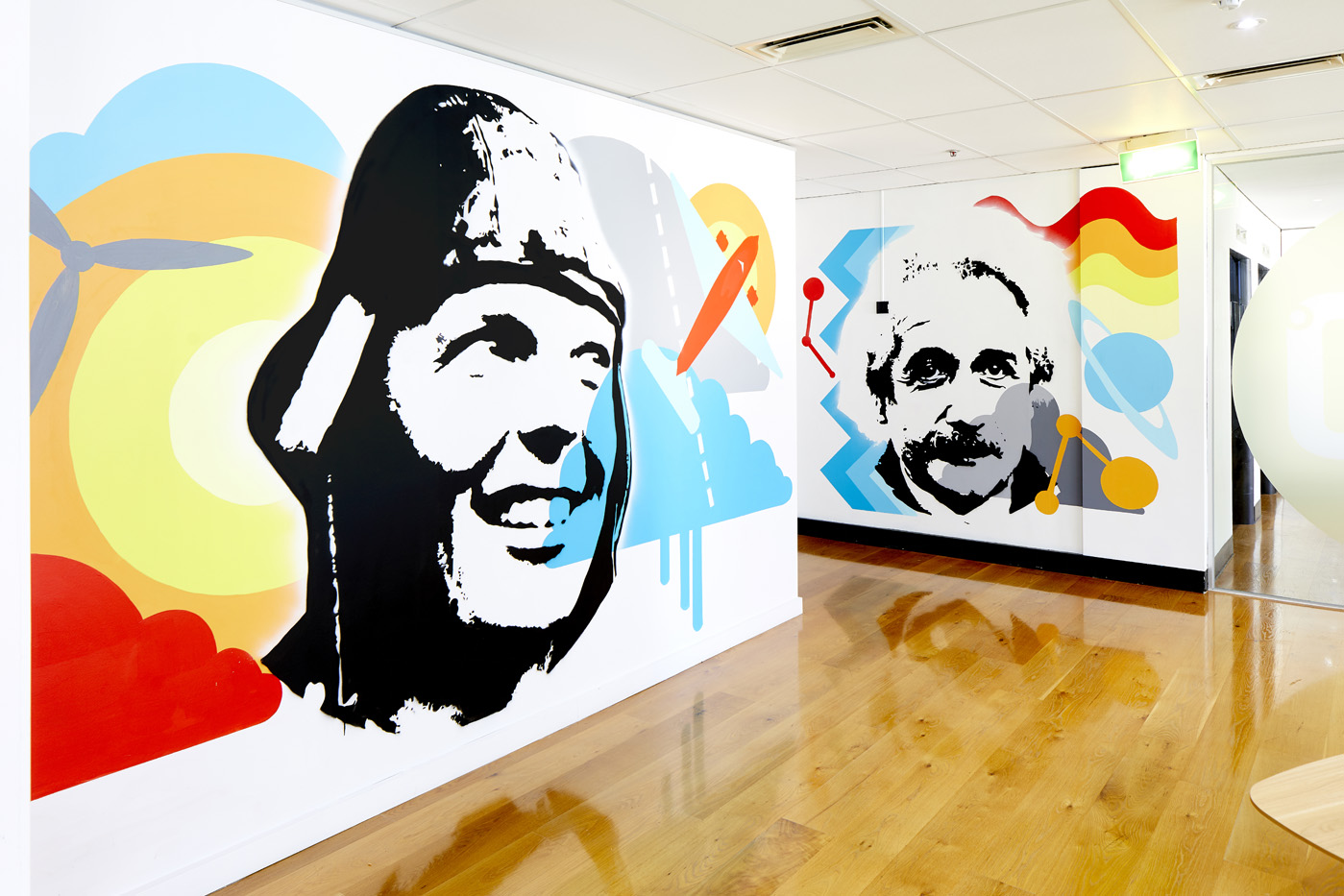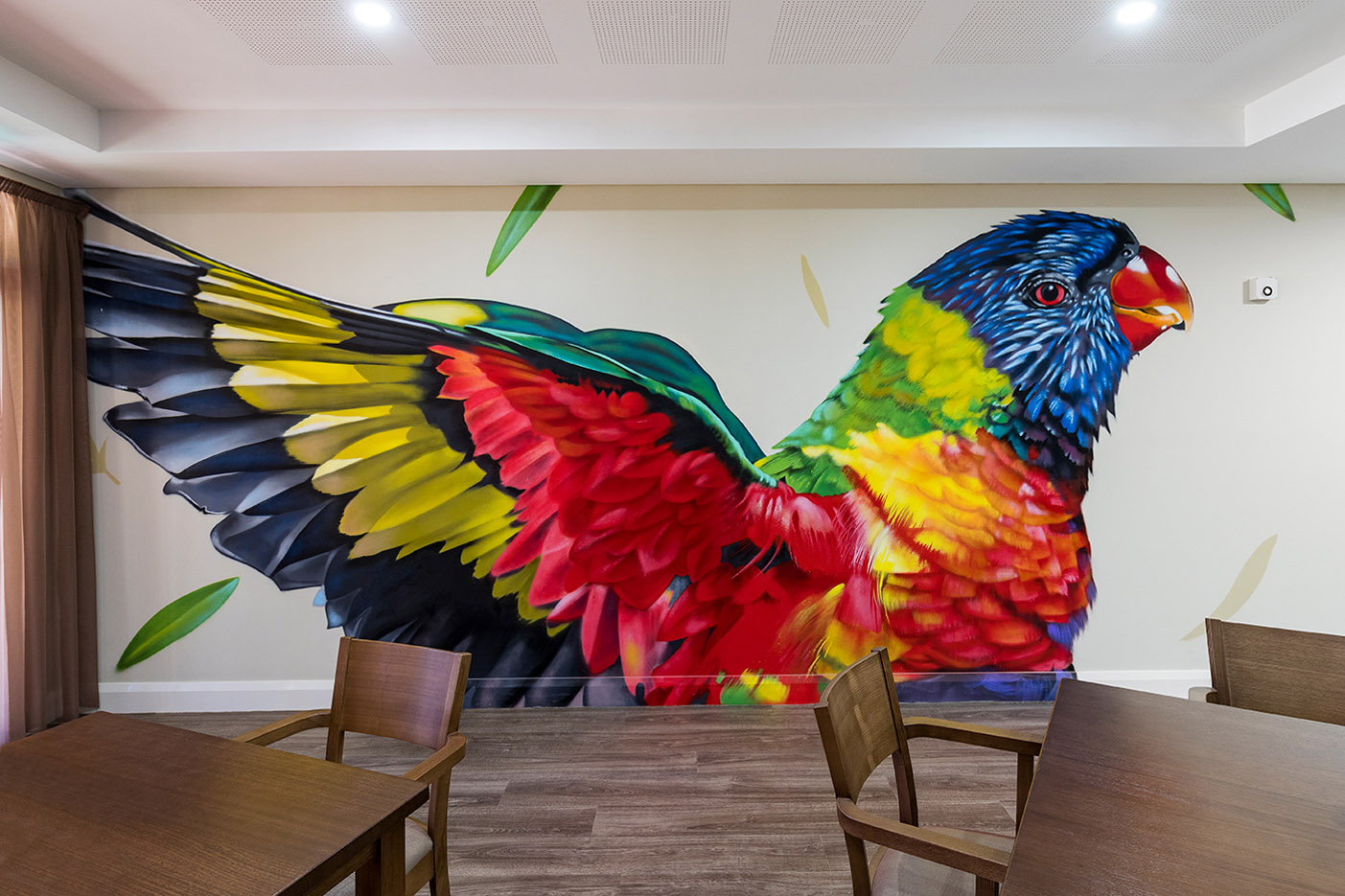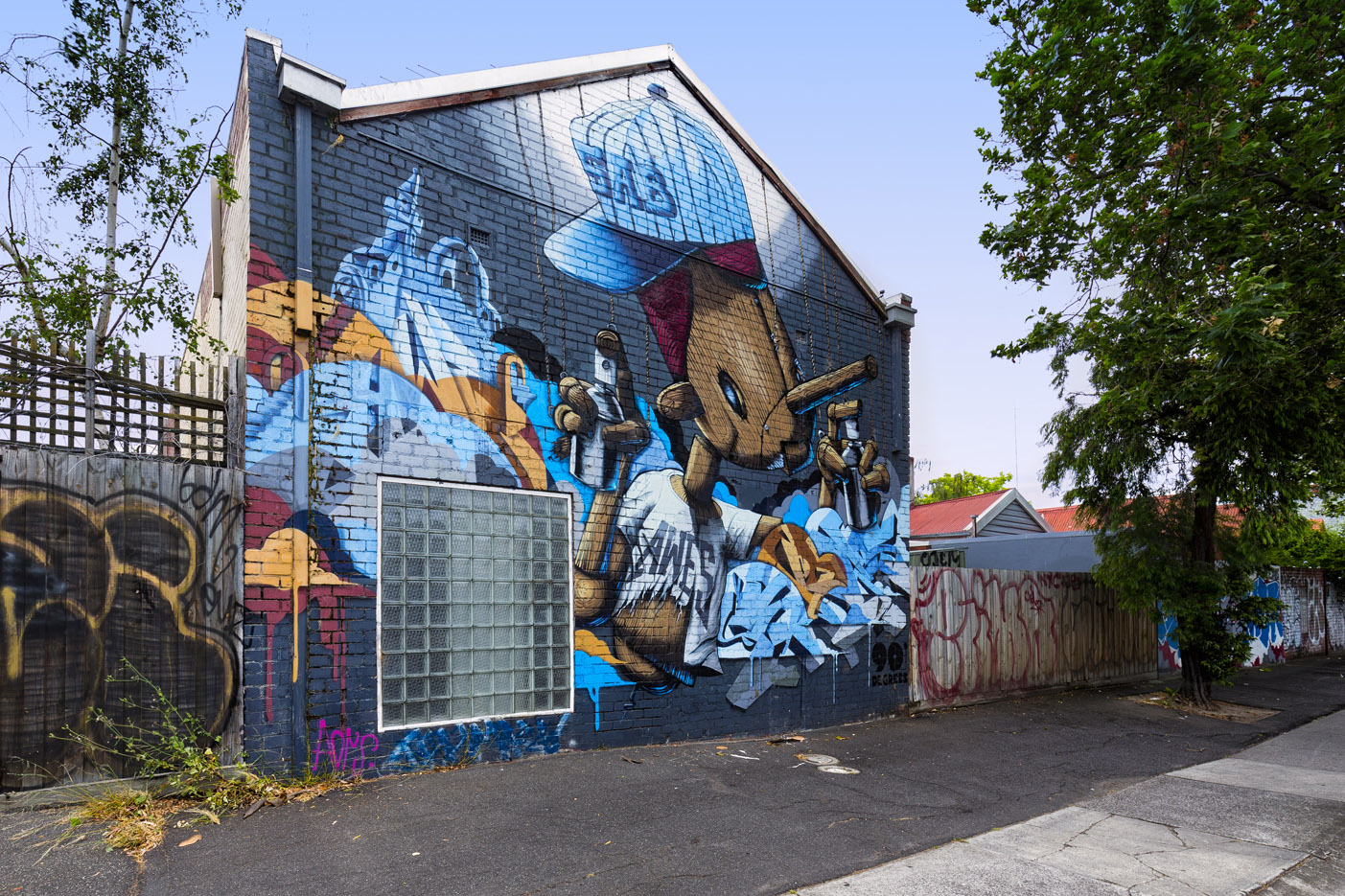Five considerations when commissioning a mural
Five considerations when commissioning a mural
Choosing to book an artist and commission a mural is an exciting endeavour that can transform a space into a work of art. Whether it's for your residence, business, brand activation, or a special event, careful planning is essential. In this article, we'll explore five crucial points to consider when commissioning a mural, along with inspiring photos to spark your creativity.
Define the purpose: who is it for?
Before diving into mural planning, determine the purpose and audience. Is it for a residential space, a commercial business (clients or staff), a brand activation campaign, or a special event? The intended audience and location will influence the mural's design, style, and message.
Choose the right surface and location: indoor or outdoor?
Consider the wall or surface where the mural will be installed. Is it indoors or outdoors? Outdoor murals require materials and techniques that can withstand weather conditions.
What material is your wall made of? Common surfaces include cement sheeting, marine ply, plaster, brick, render, or corrugated iron.
The surface's texture and condition will also impact the mural's execution. Murals always look better on a flat surface, so if its a choice between a concrete wall or a corrugated roller door, go for the wall.
The right artist will know how to handle any surface. You might think about a mural in your foyer if you're trying to impress clients, or maybe it is inside your office for your staff.
Define the artistic style: what do you like?
Booking an artist who can paint in multiple styles is helpful but not essential, especially if you've seen an artist's work that you like.
Share your preferred style with the mural artist or allow them to suggest styles that align with your vision.
Mural art encompasses various styles, each with its unique characteristics. To create a mural that resonates with your vision, consider the different styles on offer.
Photorealism
A style focused on accurately depicting objects and scenes.
Graffiti Art
Bold, colourful, and often urban-inspired, with lettering and symbols and a fascinating history. Check out these examples of early 80s New York graffiti art.
Street Art
Street art is highly versatile and can take on countless forms and styles, depending on the artist's intent and creative vision. It can encompass all the other styles listed.
Illustrative
Realistic and intricate, depicting scenes, landscapes, portraits, or narratives with a focus on visual storytelling.
Mix of styles
This might be a combination of any styles, it also might be a collab between two artists painting different styles. Having some graffiti with some photo realistic elements is always a winner.
Illustrative letter forms
Like the old ‘Greetings from’ postcard designs of the early 1900s this use of text mixed with images works particularly well for business/council/sports clubs.
Stencil art
Stencils are great for small spaces, and getting a few different ones is a great way to create a laneway style piece. Stencils show the image they are portraying exactly how they are, these can be altered and made more fun or cheeky with a great artist. Don't call Banksy, he's too expensive.
Determine essential elements: what needs to be included?
Consider any specific elements, themes, or messages you want to incorporate into the mural. These may include company logos, taglines, historical references, or imagery relevant to the space's purpose. Collaborate closely with the artist to ensure your vision is translated effectively.
Set a timeline: when do you need it by?
Timing is crucial when commissioning a mural. Discuss deadlines with the artist to ensure they have enough time for design, preparation, and execution. Factors such as weather (for outdoor murals) and the complexity of the design can impact the timeline. Be clear about your expectations for completion.
When you discuss your project with 90 Degrees, they will supply you with a timeline for design, production and project completion.
Inspiration Photos
These images showcase the diverse range of mural styles and the potential for creativity in your project.
Commissioning your mural
The process of commissioning a mural involves careful planning and consideration of its purpose, location, style, essential elements, and timeline. By addressing these key points and collaborating closely with a talented mural artist, you can bring your vision to life and transform your space into a captivating work of art.
Will the artist create a design to show me?
When choosing an artist you might want to consider their design process. Do you want to see a to-scale full-colour mock-up of the proposed mural? Or are you okay with a rough sketch and let the artist do their thing? Depending on if you're a business or a private commissioner of a mural may determine this.
Artists should be paid for their design time. Once you have engaged your preferred artist and supplied a deposit for the work, they will provide a design for your review before they start the work.
Are you ready to get started?
We've made it easier for you to choose the right artist for your project and develop a brief.


Our Services
- MuralsGraffiti and street art murals for anywhere - hospitality, office, residential...01
- Brand ActivationsBranded live graffiti for product launches & brand activations. 02
- EventsLive artwork production by graffiti and street artists for events.03
- Removable ArtStreet art and graffiti prints, canvases and wallpaper.04
- DesignLogos, rebranding, graffiti and street art graphic design for print and digital.05
- WorkshopsLearn to paint with a spray can via a graffiti workshop experience.06
- Content CreationFilm a mural being painted and share the content on socials.07
- MaintenanceCare and upkeep of outdoor and indoor graffiti and street art murals.08
Read more about our services. Learn about our process.
